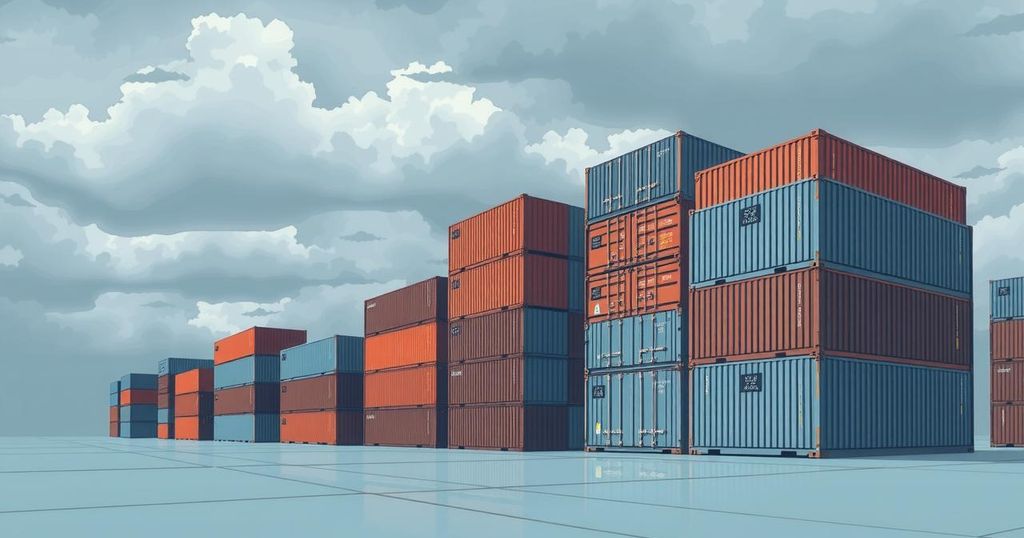Trump Announces New 25% Tariffs on Mexico and Canada

President Trump announced 25% tariffs on imports from Mexico and Canada, effective midnight. This decision, which disregards recent efforts against migration and drug trafficking from these countries, may cause economic turmoil. Both Mexico and Canada are considering retaliation, potentially leading to a trade dispute. The tariffs could increase consumer prices and are part of Trump’s broader strategy to combat fentanyl trafficking, while he also plans new tariffs on China and may target EU exports soon.
President Donald Trump has announced a new imposition of 25% tariffs on exports from Mexico and Canada, his two largest trading partners. This decision, made without acknowledging recent reductions in illegal migration and drug trafficking from these countries, is set to take effect at midnight following a month of deliberation. The announcement has resulted in significant declines in all three major U.S. stock indexes as investors reacted to the potential economic consequences.
The repercussions of these tariffs could adversely affect the economies of the U.S., Mexico, and Canada. Increased costs for goods imported from these neighbors may lead to higher retail prices for American consumers and businesses. It remains uncertain how Mexico and Canada will counteract these tariffs; both President Claudia Sheinbaum and Prime Minister Justin Trudeau have warned of potential retaliatory measures.
Trump has attributed the tariffs to insufficient actions taken by Mexico and Canada to address illegal migration and the flow of fentanyl into the United States. Although recent statistics indicate lower illegal crossings, U.S. Commerce Secretary Howard Lutnick mentioned that this may not be enough progress according to Trump’s expectations. Lutnick highlighted the importance of continued efforts to manage fentanyl trafficking, citing a 15% decline in fentanyl-related deaths in the U.S.
In addition to the tariffs on Mexico and Canada, Trump is poised to implement a new 10% tariff on Chinese goods, seeking to double the duties he previously enacted. As a result of these announcements, Sheinbaum deployed troops to Mexico’s northern border, while Trudeau appointed a “fentanyl czar” to tackle the issue in Canada.
Sheinbaum has expressed Mexico’s hope for a negotiated agreement prior to the imposition of tariffs but has indicated readiness for retaliatory tariffs if necessary. Trudeau condemned the tariffs as “entirely unjustified” and plans to impose a 25% tariff on U.S. steel and aluminum products exported to Canada.
Economists project that the tariffs will likely lead to increased retail prices and elevated material costs for businesses in the U.S., where Canada and Mexico are the top trading partners. Trump has also signaled an impending announcement regarding a 25% tariff on EU exports. In response, the EU has vowed to act against these trade barriers with potential tariffs on U.S. imports.
Despite warnings from numerous economists about rising prices and inflation due to tariffs, Trump remains steadfast in his belief that these measures will ultimately enhance the U.S. economy by incentivizing foreign companies to manufacture more within the United States.
In conclusion, President Trump’s decision to impose 25% tariffs on Mexico and Canada has significant implications for trade relations and economic conditions in North America. The tariffs are anticipated to increase consumer prices and business costs, potentially provoking retaliatory actions from both neighboring countries. As Trump concurrently prepares to target Chinese goods and a potential EU tariff, he contends that such measures will foster domestic manufacturing. The ongoing developments necessitate careful observation of the economic impacts and responses from affected nations.
Original Source: www.voanews.com








